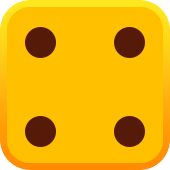












Roulette looks simple from afar, yet the first spin can feel like stepping onto a quick carousel of choices. This guide turns that blur into a clear path, showing where to stand, what to watch, and what to avoid. You’ll learn the table map, the timing of a round, and the payout math that powers each wager. We’ll cover rules, variations, and procedures that keep games fair. By the end, you’ll read how to play roulette online to felt like a roadmap and approach your first session with calm, practical confidence. Before you play, make sure to read the terms on the bonus page so you know the wagering requirements.
A roulette table splits into the inside grid of numbers 0–36 and the outside boxes for broader bets. The racetrack (where available) mirrors wheel neighbors, helping target sections precisely. The dealer’s chip rack, the dolly, and discard tray sit by the croupier; players must place chips inside clearly printed boxes. Memorize where columns, dozens, red/black, odd/even, and halves sit so you can act quickly during busy rounds.
|
Area |
Box Location |
Numbers Covered |
Practical Use |
|
Inside Grid |
Center of felt |
0–36 in rows |
Precise, higher payouts |
|
Columns |
Far edge, 2:1 |
One of three vertical 12s |
Structured coverage |
|
Dozens |
1st/2nd/3rd 12 |
Twelve consecutive numbers |
Trend targeting |
|
Even-Money |
Color/Parity/Halves |
18 numbers each |
Bankroll stabilizer |
The wheel has numbered pockets, alternating red and black, with one green zero on European/French tables and an extra green double zero on American layouts. A balanced rotor, smooth bearings, and a clean ball track define fair wheel and ball mechanics you want to see before risking larger stakes. The croupier spins the wheel one way and launches the ball the other, then gravity brings it down through frets into a pocket. Consistent spin strength and routine maintenance are hallmarks of a trustworthy table.
Inside bets cover specific numbers or tight clusters and trade lower hit rate for higher payouts. Outside bets cover colors, parity, dozens, or halves, offering steadier results with smaller returns. Compare variance: a straight-up pays 35:1 but hits rarely; red/black pays 1:1 and lands more often. Use outside bets to stabilize your bankroll while sampling a few calculated inside shots.
When the dealer opens the round, players begin placing bets across the layout. Announce complex patterns so the croupier can help position chips cleanly and avoid disputes. Keep hands clear as the ball nears its final turns; late moves can be denied. If you’re learning how to play roulette casino, watch one or two rounds first to absorb etiquette, stack handling, and dealer signals.
Live tables assign each player unique-colored non-cash chips to prevent ownership confusion. The table sign shows minimums and maximums for inside and outside; inside may require an overall per-spin minimum even if single spots are small. Clarify how the house treats hedged even-money bets against posted maximums. Track your stack with this quick reference:
|
Chip Color |
Value (Typical) |
Use Case |
Notes |
|
Red |
$5 |
Standard inside/outside |
Common unit |
|
Green |
$25 |
Larger outside bets |
Good for dozens/columns |
|
Black |
$100 |
High-limit play |
Confirm max per spot |
|
Purple |
$500 |
VIP action |
Stack carefully |
Many tables use a visual timer; others rely on the dealer’s call and hand wave. Betting opens immediately, then closes at “no more bets,” usually when the ball makes its last high-speed circuits. Late chips may be returned or marked “no action,” depending on house policy. Learn the rhythm so you never push the limit and risk a denied wager. Follow this sequence:
Each round follows a reliable cadence: open betting, spin, close betting, land the ball, mark the number, and pay winners. Dealers sweep losing chips, stack payouts, and reset quickly, so attentiveness matters. Expect roughly 40–60 seconds per spin at a busy live table. If you practice how to play roulette casino at home, mimic this tempo to build good habits.
Dealers alternate spin directions to keep outcomes independent. The ball circles the track, slows, kisses a few frets, and finally drops into a pocket. Experienced players glance at rotor speed only to time final decisions, not to “predict” results. Your priority is clear chip placement, limits awareness, and calm decision-making.
When the ball settles, the dealer calls the number, color, and any qualifying outside outcomes. A dolly goes on the winning number; all bets touching it stay locked until payouts finish. Electronic boards may show recent results, but treat them as information, not signals. Photographing layouts is often prohibited, so rely on quick notes or memory.
The dealer sweeps losing chips, then pays winners in a set order: inside first, then outside. Verify amounts before stacking or converting to cash-value chips for the cashier. If a bet was unclear, request a supervisor; concise explanations help. Use this how to play roulette casino snapshot:
|
Bet Type |
Pays |
Example Stake |
Expected Return on Win |
|
Straight-Up |
35:1 |
$10 |
$350 + $10 |
|
Split |
17:1 |
$10 |
$170 + $10 |
|
Street |
11:1 |
$15 |
$165 + $15 |
|
Red/Black |
1:1 |
$50 |
$50 + $50 |
Bets come in families: single numbers and clusters (higher variance), or broad outcome groups (lower variance). Match your risk tolerance to a family and track results by category. Keep unit sizes steady, so streaks don’t distort your plan. When unsure how to play roulette with cards, default to simpler structures and build from there.
Here is the basic rules explained snapshot: a straight-up covers one number; a split covers two adjacent numbers; a street covers three in a row. Corner bets cover four numbers at an intersection; line bets cover six by bridging two streets. Place chips exactly on lines or centers to avoid confusion. If the dealer cannot read your intent, ask for assistance before the spin.
Columns cover 12 numbers vertically; dozens cover 1–12, 13–24, or 25–36. Even-money bets—red/black, odd/even, and 1–18/19–36—offer steady hit rates with modest returns. Combine an even-money base with an occasional inside bet to keep play engaging without tilting volatility. Use this quick matrix:
|
Category |
Box on Felt |
Coverage |
Typical Use |
|
Column |
2:1 boxes |
One vertical set of 12 |
Balanced spread |
|
Dozen |
1st/2nd/3rd 12 |
Twelve consecutive numbers |
Trend following |
|
Red/Black |
Color diamonds |
18 numbers each |
Bankroll anchor |
|
Odd/Even |
ODD/EVEN |
18 numbers each |
Low-volatility core |
House rules shape long-term outcomes, so read the table sign before sitting. If you’re researching how to play roulette rules, verify how zero is treated on even-money bets. Note chip-color policies, section bets allowed, and maximums on combined hedges. Differences here can save or cost a meaningful slice of your budget.
European wheels use a single zero, lowering the house edge compared with double-zero American layouts. French tables often add player-friendly treatments on the same single-zero wheel. American roulette can be faster but carries a higher long-run cost due to the extra zero. When choosing a venue—especially while learning how to play roulette casino—prefer European or French if available.
|
Variant |
Zeros |
Typical Edge on Even-Money (No Special Rules) |
Notes |
|
European |
0 |
~2.70% |
Balanced option for learners |
|
American |
0 & 00 |
~5.26% |
Higher cost over time |
|
French |
0 |
~2.70% base |
Often improved by special rules |
La Partage returns half your even-money stake when zero hits. En Prison “locks” even-money stakes for the next spin, freeing them if the follow-up wins. Both rules reduce effective edge and stretch session time. Ask the dealer which rule is active and whether it applies to all even-money boxes.
Arrive with a fixed bankroll and divide it by planned spins to avoid emotional chasing. Choose a slower table where the dealer can answer questions clearly. Keep receipts when converting color chips to cash-value chips before cashing out. If you’re exploring how to play and win roulette, remember that disciplined bet sizing and table selection beat streak-chasing.
Anchor sessions with red/black or odd/even while you learn chip placement and pace. Mix in one small inside bet per spin for interest, but keep units modest. Track outcomes for 20–30 spins to calibrate volatility and confidence. Use this how to play roulette guide as a checklist to avoid spur-of-the-moment escalations.
Stand behind the line for a few rounds to learn dealer tempo, player traffic, and etiquette. Watching payouts teaches the math faster than charts and reveals table speed. Note how often last-second bets get denied; it saves frustration later. Treat your early visits as a gameplay tutorial, not a profit mission. Explore the best slot online games available at Lucky Tiger Casino and enjoy high-quality gameplay.




